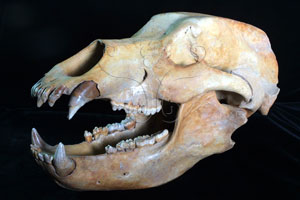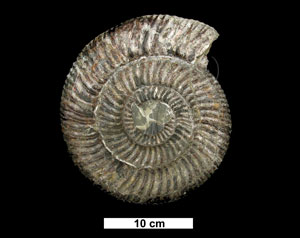

|
Fossils of Cengjiang Biota (National Museum of Natural Science)
The Chengjiang biota was first discovered in the yellow-green shales in Maotienshan in Chengjiang County, Yunnan Province. In recent years, however, abundant Chengjiang biota fossils were also found in the siltstone layer above the shales, their know...
More about this collection » |

 
|
Vertebrate Fossils (National Museum of Natural History)
There are currently 4,500 fossils of vertebrates in the collection of the Museum of Natural History, collected from Taiwan, China and other places around the world. Specimens date from the Paleozoic, Mesozoic and Cenozoic eras, and include classes Ch...
More about this collection » |

 
|
Invertebrates fossils (National Museum of Natural Science)
Invertebrate fossils are the most common fossils in Taiwan. The National Museum of Natural Science has budgeted for increasing its specimen collection every year since its founding. The bulk of the museum specimens are fossils from the Cenozoic layer...
More about this collection » |


|
Microfossils (National Museum of Natural Science)
Nannofossils refer to small fossils that need to be observed and studied through a microscope. Due to wide distribution, large quantity and short lifespan, some nannofossils can be used as index fossils, and are very helpful for comparing geological...
More about this collection » |


|
Bronze Rubbings collected in the Institute of History and Philology (Academia Sinica)
Institute of History and Philology of Academica Sinica collect over ten thousand bronze inscriptions. They are including exquisite overall rubbings and a large number of bronze inscriptions, both of which were bought by the former deceased president ...
More about this collection » |


|
Oracle Rubbings collected in the Institute of History and Philology (Academia Sinica)
Institute of History and Philology of Academia Sinica has numerous valuable rubbings of Oracle Bone inscriptions. There are approximately 40,000 items, which were obtained by two different sources. Firstly, oracles excavated by archeologists and seco...
More about this collection » |


|
Ivory and Bone (National Palace Museum)
The antiquities held in the collections of the National Palace Museum span a period of at least 7,000 thousand years, and consist of a large variety of genres, including bronze, jade, porcelain, lacquerware, etc. Its collections are fine in quality ...
More about this collection » |


|
Jade and Stone Tools (National Palace Museum)
The antiquities held in the collections of the National Palace Museum span a period of at least 7,000 thousand years, and consist of a large variety of genres, including bronze, jade, porcelain, lacquerware, etc. Its collections are fine in quality ...
More about this collection » |


|
Ceramics (National Palace Museum)
The antiquities held in the collections of the National Palace Museum span a period of at least 7,000 thousand years, and consist of a large variety of genres, including bronze, jade, porcelain, lacquerware, etc. Its collections are fine in quality ...
More about this collection » |


|
Curios (National Palace Museum)
The antiquities held in the collections of the National Palace Museum span a period of at least 7,000 thousand years, and consist of a large variety of genres, including bronze, jade, porcelain, lacquerware, etc. Its collections are fine in quality ...
More about this collection » |





